4v291o
This adaptation of Stephen King's novel is very close to it and can claim to be a very good representation. Despite Travolta's character being a bit implausible in relation to the book, the casting choice there was a bit of a miss (credit to my friend Gabriela for this part 😂, she's right). The first hour of the story has a rather slow pace. It's understandable that some character development needs to take place, but there's still a lack of major action. Despite this, the main novelty of the film is the complete break from the stereotype of the abused high school girl and everything that comes with that type of story, which then turns it into horror. Unless it's classified as such from the beginning, it's not expected to become that way by the end. That's remarkable, although the supernatural element is too forced; it's unnecessary and could have been omitted, leaving only the psychopathy, as that would have been more than enough.
After the bloodbucket scene, very memorable indeed, everything accelerates, and the film's pace becomes surprisingly rapid. There's something very interesting about the extremes, but the truth is, this film takes extremes to "the extreme", and that's saying something. The mother's religiosity is spectacular, and it's very interesting how they make her ridiculous at the beginning only to insert a completely unexpected ending.
Technically, it's very successful, although there are some delays in the sound during the mother's death (perhaps it's the version I saw).
]]>
It's incredible to believe this film has been accused of delighting in portraying violence in such a crude manner. Everyone forgets that the history of the Western Church has been plagued by graphic representations of this kind throughout history. Just look at all the Renaissance paintings and chapel sculptures where the iconography of Christ is always presented as a lacerated figure. Even in their most restrained depictions, there is always an expression of suffering. Not only because it is portrayed this way in religious texts, but because there is something about pain that borders on ion, and thus the play with the paradox that has always been present. So if the director's intention is to make this crucifixion scene into a film, there is no "delight" beyond a faithful representation of what humanity has "reveled" in for centuries. Thus, as the functional basis of the script, the accuracy of the events and characters based on the references taken is exceptional. The aesthetic, photography, and shot construction functions are subject to this factor and more than fulfill their purpose.
An interesting aspect is that it is possible to see this attempt at human connections despite depicting such a sensitive and exalted figure within society. Thus, the Jesus of Nazareth presented here is more of a coalition between the saint and the human being; he is not just the saint of the texts. All of this is an attempt not so much at direct as indirect exaltation; it is through identification that worship is then achieved. The figure of Mary is one of the most perfectly realized; the actress gives a central performance, as she is the connecting bridge between the "human" aspect of Jesus, and this creates an even greater empathy with the audience than that of the protagonist. Another point worth highlighting is the use of languages. It is a great achievement to have used the native languages throughout the film in the most truthful way possible.
The only flaws that could be attributed would be the excessive slow motion scenes and the symbolism. Although there are some very good symbolic constructions in the film, such as, to mention the most notable, that of Judas and his death, that of Pontius Pilate and his washing of his hands, and Mary Magdalene when she met Jesus, there are others that are somewhat broken by their forced conception (the Devil and his physical representation).
]]>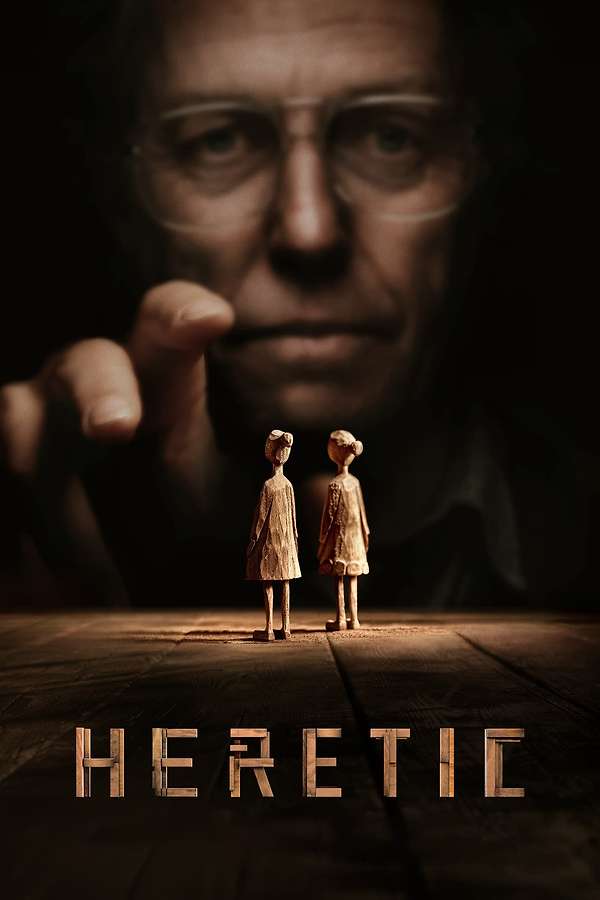
In an unexpected parallel, as in Dante Alighieri's Inferno, this irrepressible atheist builds a fortress for sinners in descending circles. This is how this film is presented in a single location. As for the script, it's redundant and makes no significant contribution to the strong issue of the long-standing discussion regarding religion as a concept. The phenomenon of interaction/intertextuality as the central axis of society and all its sectors (in this case, the different religions) is widely discussed, and there's none of the novelty in its presentation that the film boasts. So from there, as a main premise, it loses a lot and the film itself ends up being, very ironically, just another intertext. As for the other element that could sustain it, suspense and thriller, it fails again, as it ends up being predictable. It uses well-worn forms and techniques of the genre without any novel contribution to its execution. The death of one of the missionaries and the theft of the bicycles (as the main twists in the story's tension) lost much of the element of surprise because it was announced too directly beforehand, and when the moment of its "revelation" arrives, it doesn't create the expected sensation.
The only thing that truly saves the film is Hugh Grant's incredible performance. He steps out of his comfort zone and portrays a character very different from the typical ones in his filmography. And while the phenomena of intertextuality and suspense are utterly flawed in its audiovisual construction and its script , it can be said that there is a marked and successful effort on the part of the acting in providing a very accurate portrayal of a very peculiar and different character.
]]>
Life is an illusion; it's a performance on a stage, nothing more. This film is a masterpiece made musical. Among the many aspects that this assertion is the construction of progression on parallel planes: on one side is the "real" world and on the other is "fantasy." However, reality becomes so fantastic, so plastic, that it becomes a complete show. The choice of a subject as serious as a murder and the accompanying trial is perfect because it allows the intended play to be doubled. Thus, each character is a self-aware prototype of their condition on this small Broadway stage. The film then becomes a kind of metafiction to a certain extent.
The musical numbers are exceptional; the Cell Block Tango is one of the most perfectly realized performances in the entire film history. The conversational tone, which continues even after the melody begins, as well as the excellent, homogeneous blend of sounds that blends into the beginning of the number, is incredible. These latter characteristics extend largely to all the other musical acts, thus achieving the cabaret-like feel the film is seeking. That's why the soundtrack is one of the film's greatest wonders. Combined with the art direction and photography, which manage to sequence an incredible number of commendable montages (the first sequence of Velma's song alongside Roxie's sex scenes and Richard Gere's tap-dancing scene), it becomes a true piece not only of filmmaking but also of theater.
]]>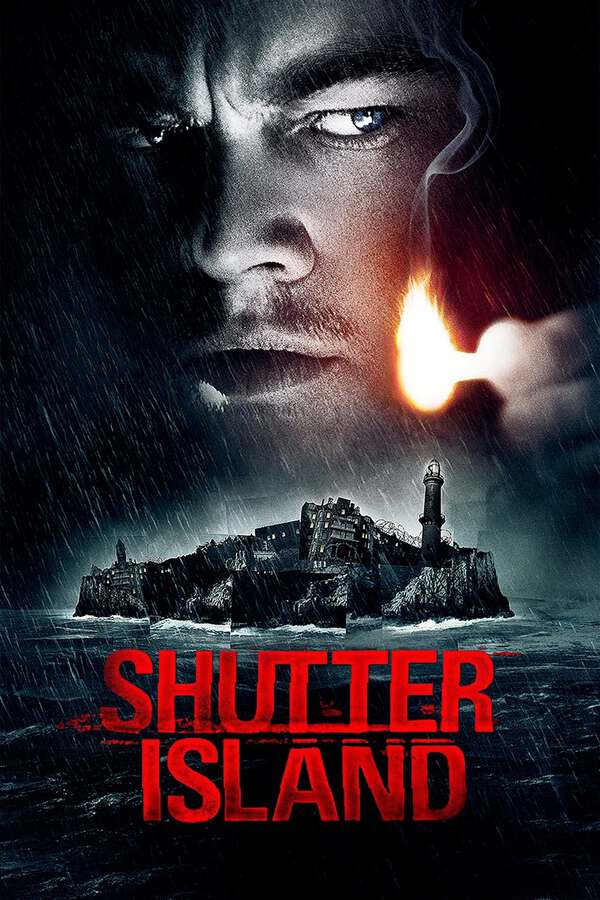
You think I'm crazy. What if I say I'm not? That's useless, right? That's Kafkaesque genius.
Paranoia, hallucinations, and individual alienation—all of this is present in the most Kafkaesque style possible. Just as in The Trial, Edward/Andrew is a tormented cinematic Joseph K. It is with this premise that madness is structured in the script in a fractured way, like in a mirror we see two reflections of realities, different but so believable and close that it's impossible to distinguish which is the reflection and which is the authentic one. On the one hand, there is what the protagonist maintains from the beginning, which is presented to us as the "plot," and on the other, we have what the doctors and the rest of the characters maintain after the "turning point" occurs. But can we truly say that it is a turning point? In this reality fraught with mistrust, which is presented from the beginning, is impossible to establish what the truth is. How can we know that what the doctors say at the end is true and not just an unfounded truth concocted by the protagonist's mind to make him believe he's crazy after medicating him? The answer is simple: it's impossible to know. It's just as plausible that Edward is truly delusional as it is that it's all a plot, as Dr. Rachel suggests. The script never says yes to anything; it only develops and unfolds between surreal fragments of nightmares and uncertain environments. It manages to make the viewer question and not answer the questions, even at the end, you can choose between both truths. Which one you choose is your decision.
There is a lot of symbolism surrounding the construction of the art department in a sublime way. The dreams/memories are the most prominent, and there's a small, unnoticed detail that's the icing on the cake: the patch that covers Edward/Andrew's forehead at the beginning and is then gone when the other truth is discovered. It's an element that says several things. Depending on the truth chosen, it can mean that things have finally been discovered and his memories have been uncovered like the wound, or that they've been conducting brain studies, as the doctor claimed. The construction of the prison, divided into three pavilions like the three parts that make up the human brain, the black rats emerging from the hole in the rock like the evil thoughts emerging from the lobotomy puncture, etc. All of this, combined with the immersive soundtrack, the gloomy color photography, and its contrast with the protagonist's white wardrobe, make this a masterful film.
]]>
An excellent metaphor for grief and mental health. The premise and development of this aspect of the script, structured through the powerful metaphor of fighting giants, is very consistent and energetic. The dramatic development is also well-crafted, although the turning point is a bit weak because it is given to a minor character in the plot compared to others. The character structure, therefore, fails in its construction. There is instruction in characters such as the psychologist, the mother and the sister, who are somewhat weak in their exploration. Although they are placed as secondary characters, they carry great weight in the plot and are explored very superficially. While the treatment given to the themes of grief, guilt, illness, and mental health, on the one hand, acquires a powerful force in "the giants," they are weakened in the way they are brought to the screen in the main character.
Despite the challenge of adapting a graphic novel to a live-action version, the special effects are incredible, and the dark and uncertain atmosphere created by the photography is complemented spectacularly. They manage to achieve a efective medium, without excesses or shortcomings, taking into the mystery they seek to create between subjective and objective reality. There are some dispensable elements in the story that are placed as small asides that don't fit and could easily have been removed, such as: the search in the school bathroom stalls and the blood oath of both girls. Nevertheless, it's an interesting film; it doesn't reach the point of overflowing tension, although it does reach the point of emotional intensity.
]]>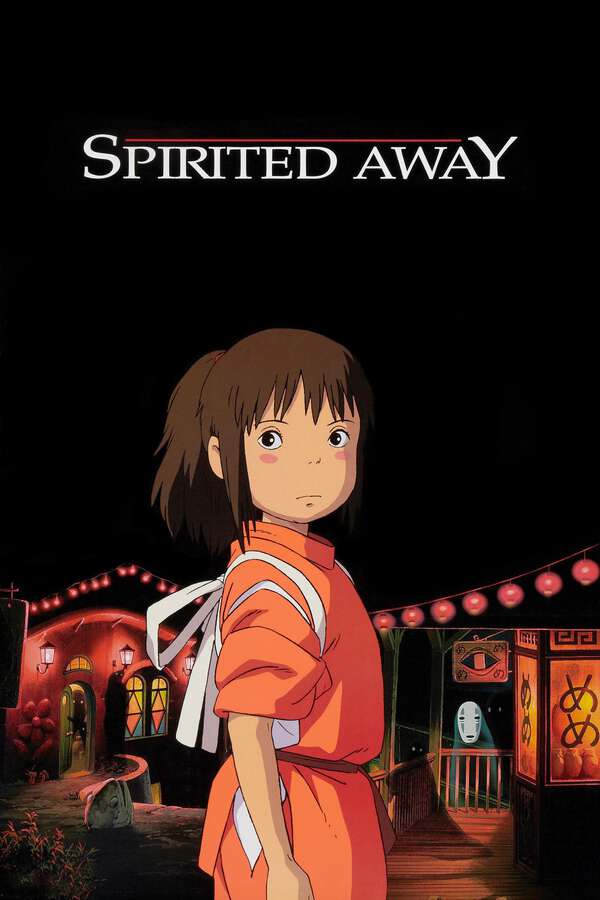
Impressionist paintings filled with natural light and colors, a dream of pantheons of gods and profound Eastern spiritual teachings are elements that converge in most of Miyazaki's films, and the film that earned him his first Oscar is no exception. While it's not the only one of his films where the fantasy world he creates with his hands intrudes into the real world, it's an important factor to add that rather than a homogeneous blend of the two, there's more of an eruption. Compared to other films like Arriety or Ponyo, we see that while in these films the fantastical creatures and elements are in direct with the surrounding world without estrangement, in this film there's an entrance from an exterior to an interior that are separate and, at the same time, one doesn't contaminate the other. The age takes place through the tunnel that Chihiro and her parents go through, and the only connection between the two environments is the one established by the girl, since they exist only within her and no one else. With both worlds separated and filtered through the girl's vision, Spirit Away takes a dramatic and intense turn in the film's opening minutes, after she enters the "other world." The action becomes more accelerated and tumultuous, and numerous characters begin to appear suddenly. All of this concludes with a return to a final calm as they exit the tunnel, thus completing the script's circular structure.
Many characteristic character archetypes from the studio's filmography are repeated: the isolated, withdrawn, but loving boy, and the girl who sacrifices herself for love. This doesn't detract from the plot, but it does detract from the construction of the love interest. If we ignore this element, justifiable for cultural reasons, the symbolism is spectacular. Filled with respect for nature and the world, recognition of ancestors and deities, and respect for one's own identity, they represent Eastern culture and its worldview. As mentioned at the beginning, it repeats themes previously explored by Ghibli, which is why this film in particular perhaps loses a bit of its appeal when compared to the rest of the studio's filmography. That doesn't mean it's not a delight for the eyes, the senses, and the imagination. As always, they never fail to envelop the audience in color and sweep them away.
]]>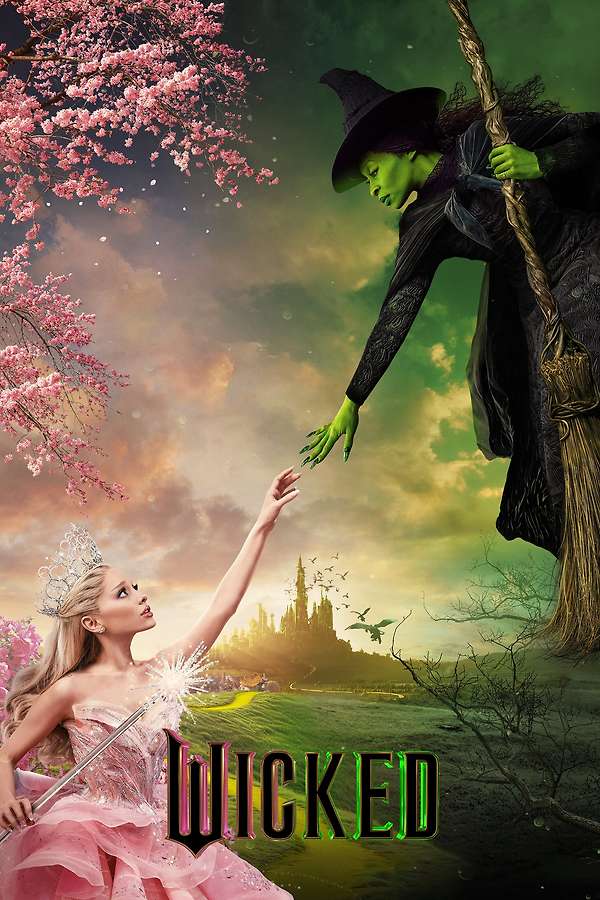
Defying the gravity of Broadway's acclaimed Wicked comes this adaptation. It would be wrong to place the entire weight of the rating on the acting and singing, because the truth is, it was quite acceptable in that regard. The characters are very well-crafted, taking into the major archetypes that comprise them. It fits the old and oft-repeated constructs of the school, teenage, and magical drama. Perhaps the only thing that breaks the mold a bit is the direct representation (so far, perhaps in the "possible" sequel, this will change) of the rivalry between the two girls over the boy. Rather, it is presented as Elphaba giving in to Glinda to maintain their friendship. The prince then becomes a third player, very secondary within the story.
There is something interesting, and it is the unusual construction of the character of the Wicked Witch of the West. The parts that gradually lead to Elphaba's transformation into that identity, unexpectedly, are provided by Glinda. Elements like the hat (a gift for the prom) and the cape (given to her because she was cold), which become symbols of evil, of everything that represents a witch, have their origins in love. A friend's understanding and not seeing these objects as something negative at first led to them gradually becoming, as a whole, something evil. It's important to note in the story how, when "good" or "innocence" is lead in other directions, it can become "evil."
The songs are memorable and very well-crafted in of their performance, however, their introduction to the scene is very forced. Aside from that and the generic script that shouldn't have taken up so much screen time, the most spectacular aspect of the film is its production. Stupendous production work is evident behind every scene and detail. If you also pay attention to the behind-the-scenes, the excellent budget management is commendable. It's not enough to have so much money in a production if you don't know where to put it, and this film knew how to invest it correctly and in a planned way to visually captivate the viewer's eye.
]]>
An extremely moving film from beginning to end. The structure of the journey and the accompanying learning experience are ideally placed. Two innocent souls, mutilated very early in their lives, meet at different ages showing that never is too late or too early. Both, Dora and Josué, are helpless, expelled from the world. Dora learned to deal with this defensively, in a self-imposed isolation, unable to fulfill the wishes of those around her. Instead, she found personal satisfaction (so often denied) by destroying the destinies of others, making it impossible for them to find a proper reconciliation or closure, because she couldn't have it.
Thus, chance places Josué, a soul just like her, who causes her to stumble constantly inside her solitude. Josué has a slight difference from Dora, and that is that he still retains hope. That hope is in danger of slowly disappearing at any moment, and the journey becomes the boy's struggle to maintain it. Dora, for her part, presents an internal conflict because, although she wants to continue as she was, her world begins to shake with the unexpected arrival of this kid. She doesn't even know why she insists on holding onto a boy's fantasy when it has destroyed so many others, just as it destroyed her own. The script reaches its point of maximum alienation with the viewer when Dora manages to accept the happiness of others, when she sees herself capable of redeeming herself and her story, and feels capable of fulfilling the desires of others. Thus, she finally allows the letters to reach their destination. However, there was still one letter left to deliver. The unexpected twist is consequently justified, and Dora delivers Ana's letter by her hand. Thus, she fulfills her last duty before finding the peace she didn't know she needed. Josué is finally where she could never be.
One of the most notable elements, besides the script that sustains the film impeccably, is Salles's unique way of depicting Brazilian reality. The camera never cuts away as it captures every impoverished and forlorn corner, but there's a certain beauty in this director's candid lens. It's like a delicate and loving rendering of the stark settings. The lighting and color palette are clear even in the darkness. There's a caress in depicting that latent love in Dora's heart, isolated and cold, like the bus stations and subway stations where they always are, but deep inside, warm and connected to others like the railway lines. The soundtrack is rhythmically tragic. It reaches its climax in the chase scene during Las Romerías. This moment is the most shocking on screen; the violent camera movements and the powerful images complement each other to create a powerful overload of the senses that only ends in stupefaction.
]]>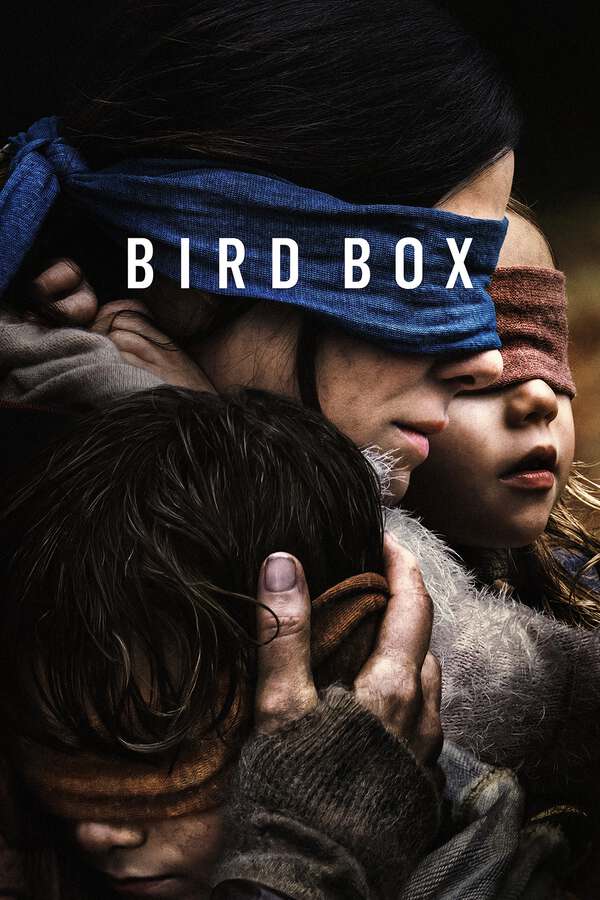
It is a film with an interesting premise but it loses its bearings during its development. The temporally intercalated structure is an interesting factor, it adds tension to the plot. The development of events and the turning point, however, are left far behind. The story remains as a mere idea, a simple topic, very strong and with the possibility of giving more, but it is not more than that. The main apocalyptic conflict is not given consistent layers or frameworks. Instead, the follow-up is shifted to the relationship of the protagonist with everyone around her (the childrens, Tom, Olympia, etc.). This is an interesting point but it should be just that, one of the many points that make up the film whose main motive of action is the end of the world as they knew it. The main genre that sustains the film in the first place is neglected.
Despite everything, if this huge mistake is forgotten, it is an interesting film. One meritorious factor is that in of the technical aspect they do manage to create a convincing film of the genre despite the small budget invested in it. At the expense of not having great elements to the catastrophe in the spaces, the spectator is effectively able to enter the atmosphere.
Although the first part of the film does not succeed in its construction in any aspect, because the introduction to the world before the apocalypse is held together with pins in of character and plot development, the second part succeeds with a crescendo. It is when the last hour of the film approaches that more depth is given to the conflict and it manages to save itself from the initial superficiality.
]]>
Ridley knows exactly how to create an orgiastic masterpiece loaded with a considerable amount of testosterone. That is why there is no director more capable of bringing to the screen a story with an extreme attachment to the old Roman Empire. One of the most important risks of making a work based on this historical period is the abysmal difference in values with respect to contemporary society. There are thousands of centuries of difference in the perspective of things, and this film manages to portray it perfectly. It portrays the lineage of fierce warriors and peasants who founded the foundations of the empire, the four fundamental pillars of a Roman, the ideal that accompanies its founding epic, sexism and the worship of its gods.
Another risk when recreating this era is looking for a point of anchoring the story with today, while respecting the aforementioned verisimilitude. The way in which the film achieves this last point is in its vision regarding war. Although this is also present in much of Latin literature in the voices of various philosophers and writers, in this film Ridley increases it and makes Maximus a pacifist, a man who fights because he must, but what he really seeks is peace, justice that goes hand in hand with the tranquility of the human being.
The battle scenes and deaths reach a high level of sublimity. The epicness with which each of the encounters with weapons is carried out is the most meritorious and what takes the longest to present in detail, it is millimetrically choreographed. The scope of the production in the film is evident, it is a film that sells to the public easily and is a symbol of the genre.
]]>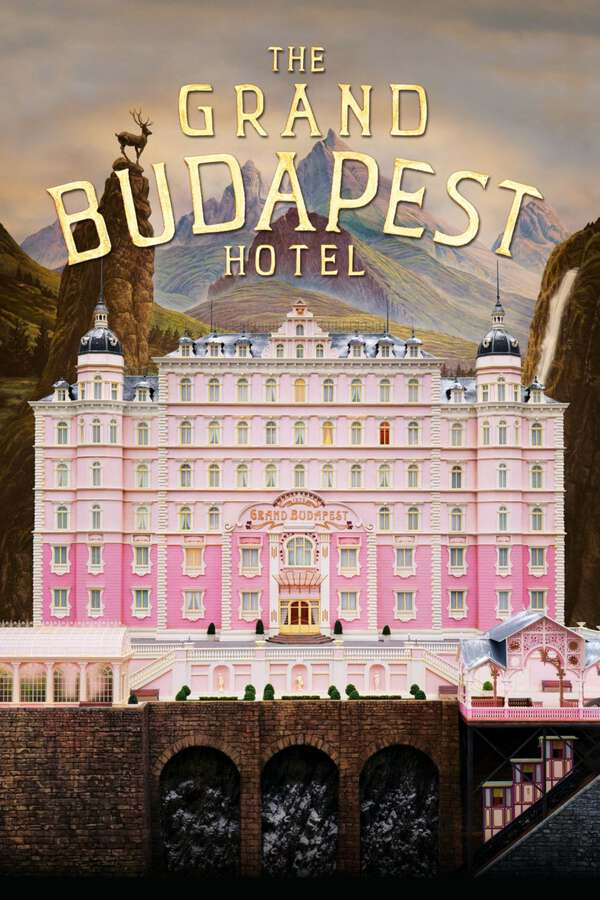
An exquisite mix of romance, action, comedy, gore, mystery, war and many other genres in a segmented but at the same time harmonious way as a whole. The main story becomes attractive, it hooks the viewer in the manner of an old adventure novel. It has a strong hold on the past, on those glorious days of a country that strives not to let what once was die. Like Don Quijote and Sancho Panza, like Sherlock and Watson, Gustave and Zero are presented, one apprentice to the other, the future and the past, united and mutually feeding back. Both make up that union in the last of the narrative levels. This is the most meritorious factor of the script, the highly structured division of said narrative levels from the first scene. Like the countless rooms in a hotel, the story is subdivided and loaded with other stories derived from the first.
We find four, the first, with which the film is presented, is the girl who reads the book. We are never told her name, she never introduces herself and she never utters a single syllable, yet she possesses the first layer of the story, as we possess it. Like her (or she like us) we are mere listeners to the events that occur. Then the second narrative level develops, narrated by the writer of the book and also a participant in the third narrative level. He delves into it and then we see Zero, who forms a duo with the writer himself. Zero, in turn, narrates the fourth and final narrative level in which he is also a participant. Unlike the fourth level where he is the future, in the third Zero has already become a past, but a different past, a hopeless, lonely and nostalgic one. This past/future dichotomy is transferred to all levels with different connotations, except for the first, where there is only a present and the unknown of what to do with what has been told, what to do with that past once it has been paid tribute to. From that angle, the film has an open ending.
The lateral camera movements accompany the revelation of elements and scenarios in tense moments, in a meritorious way. Space is essential and the color palette, in good Anderson's style, is in good agreement with the character of the characters. Where it fails perhaps a little is in this very conception, although perceptions change depending on the narrator, space does not. This may respond skillfully to the very meaning of the main thematic line mentioned at the beginning, but it does not correspond to the plausibility of the layered structure.
In any case, it is an extremely immersive film that quickly and effectively captures you.
]]>
A hallucinogenic ritual dance introduces and brings this story slowly and consistently to a close. It presents a very slow and leisurely plot, where the main conflict (a girl dealing with a deep mental illness due to a family trauma and a relationship on the ropes) is subordinated in the dramatic progression. The internal conflict of the protagonist, her immense overwhelming problem, becomes so assimilated that the spectator feels in the images her suffocation, her mental gaps, her attacks and her hallucinations in a very sensorial way. The film becomes, for this reason, a journey with the airs of a pagan and demonic sect, overshadowing the other attempts at plot lines that are very weak. These plot lines become a mere pretext to induce sensations in the audience similar to the effect of a narcotic, mixed in turn with symptoms of deep mental disorders. This is achieved not only with the aforementioned elements of the script (including also the lack of very well-managed dialogues. The less spoken interventions a character has, the greater the inner explosion they possess) but also with the soundtrack and the risky shots.
You might even come to the conclusion that everything you're seeing from the scene where they're drugged while sitting under a tree isn't real, just a hallucinogenic effect filtered through Dani's vision. But that's just a possible line of interpretation, the film doesn't necessarily take you trought there.
Although certain interspersed scenes, which are intended to increase the protagonist's problems (the nightmares and memories she has), are sometimes a bit forced, the vast majority of them are inserted in an impeccable manner. The use of a flip over shot when they are on the way to the village is phenomenal, combining the substantial change of situation and the destabilization. It is predicted at all times through these techniques as well as through paintings and other elements of art. The dreamlike and choral music is very immersive. Everything, including the very significant contrast of the color palette with the genre of the film, contributes to creating an ideal bucolic atmosphere that is only broken by the horror events. This breakdown lays the foundation for the mental unreality that causes a nervous breakdown, and which is very well defended in all aspects that make up the film.
]]>
Tense plot that takes the viewer to the edge of their seat. It achieves its main goal by capturing the audience's attention to what is happening. The old and very hackneyed Hitchcockian lesson of placing a bomb, telling the viewer that it is there and then the tension falls on "when" and "how", thus provoking the desired effect of suspense. Although it achieves this in a meritorious manner, it remains superficial and does not go on to give twists or different points to the cliché.
It is impossible to deny that the production is excellently done. The spaces and the effectiveness within a terrorist situation in these circumstances are reflected perfectly. The soundtrack and the editing are wonderful, the cuts and the agitated and almost convulsive rhythm of the film complement each other, giving way to the drama of the situation. However, it stays there and does not transcend.
The acting also goes hand in hand with this perspective, Carson leaves much to be desired in the verisimilitude of her emotions as well as her character being relegated to a lower level, in the background. The attempt to portray a "damsel in distress" falls behind because it is not developed appropriately. Egerton, on the other hand, achieves a correct performance but his character sometimes becomes a puppet controlled by an adrenaline that leaves no room for a pertinent human reaction.
]]>
A film that turns a concept as negative as death into a true search for peace. As always, Almodóvar manages to create a film that reflects on various topics in life, especially controversial and current ones, with a very personal perspective, but above all, consoling. He makes his point without imposing it, without making the whole film out of it, thus, he manages to talk about the destruction of the planet, overpopulation, the post-COVID mental crisis, euthanasia and the dehumanization to which we are slowly sliding (the scene between Ingrid and the personal coach is one of the best achieved) without ever abandoning the main thread or making unnecessary statements. These are topics that he slides subtly and slowly, like small brushstrokes.
It is a film with a calm, almost hypnotizing rhythm, like a sonata, the birdsong that Martha liked to listen to and like the indirect free narrative of Faulkner and Hemingway that Martha was beginning to stop understanding. One of the most astonishing approaches of the script is achieved when it comes to depicting the moment of death. It is the climax of the film and, nevertheless, although a bit of tension is generated around that moment (when they forget the pill and when Ingrid thinks that Martha has already committed the act because she saw the door closed) it is nothing more than a leitmotif because it is not what makes the spectator stay. Greater proof of this is achieved when Martha's death actually arrives and the subliminity with which it is charged is only approached from Ingrid's close perspective, it is not extrapolated to other levels expected in such circumstances. We see rather this exploration of Ingrid, of how she manages to understand that death, even desired, is not the end, is just part of life too.
The color palette is very characteristic of the director, it maintains its essence even in this new installment of his filmography. The yellow at the "end" and the contrast between its semes, the green surrounding the forest house as well as Ingrid's deckchair as hopes that surround and maintain each other and, of course, the "RED", are very well placed.
Cinematographically it does not disappoint but there are no great explorations in this aspect (scenes such as Martha's flashbacks and the burning house are the only ones interesting in their composition and in how they are inserted).
Another drawback to point out would be in the acting aspect. They are all established and recognized stars, however, although their work in this film is spectacular, a certain hint of a learning exercise was noted. There are vestiges, in the characters, of an exploration, by both actresses, in these ways of making films that are very new and different for them.
]]>
Watched on Thursday January 23, 2025.
]]>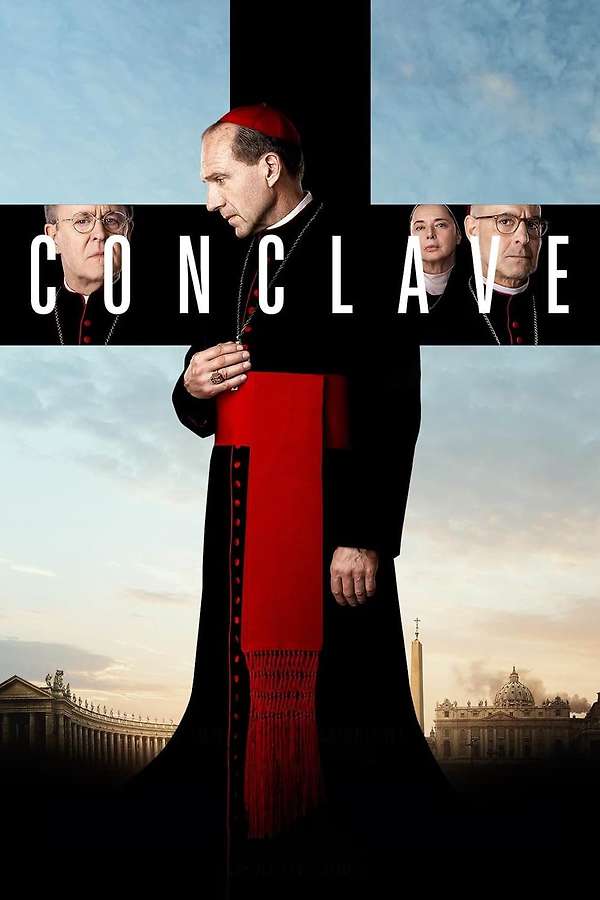
This film is presented on screen with sobriety and an effective slow plot. Each layer that unfolds the story of it is a worthy ecclesiastical sermon. In accordance with this aspect, the fundamental elements of the script are given at a slow pace. It is a story whose events are filled with an ideal mix of suspense and extended rhythm. In response to its name, it focuses on a confinement and the men subjected to it find themselves doubting everything around them. However, this simple line is nuanced in its integrity because it is charged with the strong transcendence of a decision as important as the election of the new pope or as changing a life. The ideal but almost impossible balance that the church tries to find in our modernity is accurately captured throughout all this events.
Everything responds to immersing the spectator in that atmosphere of tension as well as heaven. There are times when the space becomes claustrophobic (especially when the cardinals are alone in their chambers with their own guilty and incomprehensible consciences) and other times when it becomes a dignified angelic opening despite the confinement (when decisions are made and they need a kind of faith to enlighten them). The shots also contribute to the aforementioned immersion, the large general shots contribute to giving that sublimity to the decision and the close-ups to granting it desperation (especially when combined with the exalted sighs). The camera movements from outside to inside also help when it comes to immersing oneself in the diatribes of the characters. The monochrome and squares that plague all the sets are also a great help to portray that limited and retrograde tradition that the church tries by all means to continue maintaining and that finds its culminating point in the character of Tedesco.
As father: the deceased holy father, son: Benitez and Holy Spirit: Lawrence, these three characters are positioned in a holy trinity that governs the film. The protagonist, Lawrence, tries to reconcile that balance between the two extremes within the headquarters while also trying to fight that same battle within (just like the spaces, it presents one form on the outside and another on the inside). Everything also contributes to the main conflict of the film because they are placed like two sides of a coin, what is visible and what is inside.
For all the above mentioned, this film wins. The only thing that is considered a bit of a loss is the unnecessary direct mention of the final outcome. With a successful inclination that led the dramatic progression to directly say the problems (despite the fact that it implicitly says a lot and does it better this way) only when it is necessary to say them, it loses a lot by not getting it right from that perspective during the end. Also, as always, in trying to give a unifying and universal vision of global problems, they end up falling into North Americanized and prejudiced considerations about almost everything.
]]>
(Spanish version. Manner of respect 😅)
¡La voy a entregar viva!
Uno de los mejores filmes, una de las más conmovedoras historias de amor del cine cubano. La factura escénica que consigue Fernando Pérez es una de las más perfectamente logradas en pantalla. La forma en que hilvana la sucesión de acontecimientos es muy particular dentro de nuestra filmografía nacional pues no lo hace de manera lineal y se perciben una identitaria cantidad de saltos temporales entre las escenas, como disparos. Es fenomenal la manera en la que yuxtapone las partes dentro de esta historia sin que el espectador note falta de nada. A pesar de todo logra una concordancia meritoria dentro de esos riesgosos cortes violentos de escenas. Asemeja así la narración a la situación sangrienta en la que se encuentran los protagonistas donde los sucesos se dan rápidos e inesperados y en donde deben esconder todo por desconfianza así como se esconden momentos al público.
Aunque otros elementos como el guión y el sonido, son sublimes, la potencia de este filme sin duda es la calidad actoral. Isabel Santos y Luis Alberto García forman un dúo impecable que logra retratar una visión muy íntima de esos jóvenes que, a expensas de cualquier acción heróica, eran ante todo seres humanos. Es memorable como el primer y el último encuentro de ambos, ambas escenas, son las mejores logrados por la altura dramática que alcanzan las dos. En concordancia con la situación del país tratada, otorgan nombres a esos anónimos clandestinos de forma acertada.
A pesar de los años, es una historia que no envejece, el priorizar la temática del amor en un contexto de guerra y el acercarse a ella de la manera en que lo hace, es lo que inmortalizan a esta increíble cinta.
]]>
The master of suspense strikes again.
The tension in this film can be stretched infinitely, like a needle's thread. Hitchcock is a sublime director who manages to keep the audience on edge in all his films, and this one certainly does not fail to do so. However, compared to his immense filmography, his other films do it with greater care. The story, the script, is left behind in some aspects. The main conflict between Madelaine and Scott is dealt with so much on screen that the secondary characters practically become tertiary and end up fading into the background, forgotten.
Characters that feel like beings with great weight in the plot and that could have contributed much more, do not manage to overcome their lack of attention and are left behind and insufficient. Apart from that, other elements, such as the space (based on constant wandering, height and darkness and the concealment of intimate rooms) greatly the construction of the protagonist and his problem (vertigo and its similarity to love) which is what encomes the plot in its entirety.
Cinematographically, it would get five stars because from that point of view it is phenomenal and fits in well with the aforementioned problem. The camera movement named after this film, the animations during dreams and the opening credits sequence are some of the masterful and innovative techniques that this film shows off. The soundtrack is also a reinforcement worth highlighting, it tunes in during the precise moments, especially with the female characters.
In conclusion, it is an interesting and disturbing story, it manages to keep the audience thinking until after it has concluded.
]]>
You are like Don Quijote, fighting against windmills.
Indeed, this film is a very interesting way of approaching the much-discussed subject of aging. Despite being a very multifaceted director, it's a little bit different this style so typical of Zemeckis. Similar to Who Framed Roger Rabbit?, this film presents a loaded satirical, eccentric and colorful atmosphere bathed in body dysmorphia but, indifferent to them, it presents an unexpected inclination to a slight gore.
This deserves the merit of being a light film while giving it a certain seriousness, it balances it in visual . However, this conceptualization affects the dramatic progression because, although aesthetically and acting-wise it provides novel elements in the style it intends to emulate, the script is affected and becomes predictable. It becomes monotonous and the turning point feels insufficient.
Despite everything, there is an interesting twist on the topic of women who have been fighting since they were very young, due to a lack of mutual communication, who reconcile and become allies after many years. The peculiar thing is that they insert a macabre and mystical point into the cliché, making it attractive. As in Carrie, from 1976, it is always interesting when horror, in any of its variants, is mixed with other genres, giving them a unique twist. Although the reflection on age as a senseless struggle is implicit, it is this interconnection of genres, connected to the director's style, that steals the show.
It is an attractive proposal because the comedy is achieved in a sublime way, it is the most meritorious thing about the entire film. Along with this, the performance of Meryl Streep and Goldie Hawn complement each other in an ideal way, it is a somewhat different facet of the actresses who manage to successfully fit it.
Last but not least, it's one of the many inspirations behind The Substance of 2024, so there are clear connections that can be drawn between the two films (although it's an intertext that goes back much further if you keep looking).
]]>
A masterpiece, of all the representations of Italian neorealism, I would dare to say that this is one of its best . The crudeness and the verisimilitude with which the story is achieved find an ally in the naturalness in which the plot flows through a very meritorious script . The story manages to perfectly portray the struggle of a nation through a range of characters and stories as open as the city and the name of the film itself.
Fascism in Italy has been told in different ways but Rossellini brings a very particular vision because he puts on the table not one character around which the whole direction of the situation revolves, but multiple ones . Who is the protagonist ? At first glance one would say that it is the engineer but the scarcity of scenes in which he is given that weight is not substantial enough to affirm it . If analyzed thoroughly, it is difficult to identify a single protagonist, actually . Even so, if had to necessarily point to one, one could say that it is Rome . The Italian women in all their facets, without detracting from any of them, mothers, sisters, fighters, seductresses, traitors, etc. (the indispensable role they take on in this film is fascinating, it is also remarkable considering that it is a film from 1945). So are the Italian children, religion and the hero who "is" the protagonist, of course.
Therefore, the acting quality is overflowing throughout the film. In addition to that aspect, the editing is sublime, only the scenes of the lambs being sacrificed and then the church choirs deserve the five-star rating on their own. The violence is rationed, it is shown fairly, when it should be shown. It does appear, it is not censored as in most films of this period (partly this was done out of sensitivity—although it is characteristic of this movement not to respect this aspect—but also because of the resources they did not have) and it is not abused (as in most contemporary films).
Some shots are out of focus or poorly placed (the version I saw was a restored one) but it is justifiable considering the distances. Apart from that, it is a film that keeps the viewer satisfied. It does not contain tensions that lead to the edge or that keep the audience waiting for what will happen next. Rather, it is the emotions, feelings and empathy that it tries to stir, which keep the viewer hooked in a precise and effective way.
]]>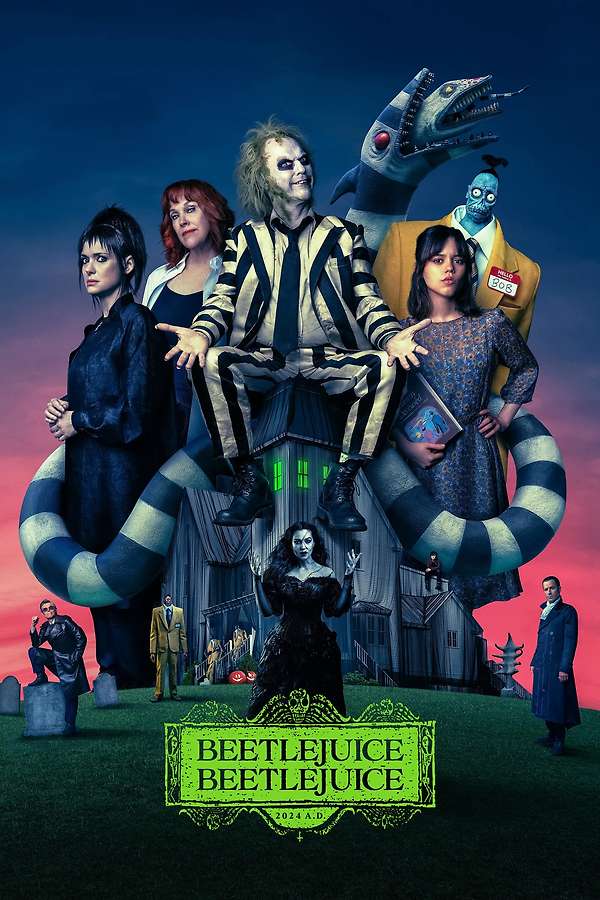
The 2024 sequel period has given us many to talk about. This new installment by Tim Burton is one of those that arrives inconsistently. Outside of the established prejudice towards second parts, this is one of those films in which it can be said, with almost 100% certainty, that Hollywood, more than the creative minds of its creators, are the ones who acted as intermediaries so that the film could reach the cinemas.
When that happens it is very easy to perceive it in the film. A great construction in its production but very little meritorious dramaturgy. Characters like Delores (placed in a hierarchy that does not correspond to her) are dispensable and the plot becomes repetitive in its conception. The only salvageable elements would be the satire (which, although it feels fresh, it is also sometimes infested with repetition) and the work behind the art department. The only thing that is moderately wild about the film, in of scenes that weave coherence, would be the turning point of the character of Astrid with the boy. Despite this, despite its relevance, even this element is perceived as being lacking in the conception of the film.
The Burtonian style of the first installment, as well as of his entire filmography, is maintained. However, due to all the Hollywood monetary hand that has conditioned the film, it feels largely suffocated. What could have become a fabulous recovery of asymmetrical gothic and such characteristic and dark freak worlds, feels crushed by nepotism. Errors that should not have left the production table reach the screen and cause a regrettable degradation of the style of the director and his team.
]]>
The most elegant of Kubrick's films, as well as one of the least acclaimed of his filmography.
This film immerses the audience in a very successful period atmosphere. It transports the viewer to the 18th century in an unusual way, as it does so through the eyes of a very controversial figure. Redmond Barry is the typical fop of his time, a character who provokes a controversial empathy.
He is a being with whom an inexplicable sympathy is created. Presents extremely reprehensible attitudes and others worthy of iration, both in equal measure. Is positioned as one of the most accurate protagonists in his human construction that has been seen in a long time. Is an exact example of the truthfulness of the human being as impossible to pigeonhole, placed as a simple hunter of opportunities and decisions that are placed in the way.
In addition to the picturesque Barry, the film also presents other elements worthy of highlighting. One of them is the narrator who is placed as an imprecise but guiding voice. It presents very clear positions but at the same time contradicts itself. Except for its focus ( it is obvious that it knows the whole story) it largely blends in with the role of the spectator.
Other elements would also be the incredibles "zoom out's" that allow a very precise opening when granting immersive general shots. These camera movements and general shots, in addition to providing that vision of intimacy towards exteriority, with the intention of ing Barry's speculative character and the typical aristocracy of the time, also allow to highlight the careful and detailed art work that was carried out both on the sets and in the costumes.
However, it is a film that requires a calm and attentive eye. The new generations may be a little disappointed by this. It is not a film for quick viewing. With the intention of imitating those times, three hours of film are granted, where, even in the most intense moments of the plot, a dignified tranquility and aristocratic European parsimony is necessary.
]]>
I think, therefore I am—Descartes
An important reflection is embedded in the pillars of the plot of this spectacular film from its title. Running on the edge of a blade is a battle to obtain more than four years, but that is impossible and not only for the Nexus 6 because in the end: "who lives?"
Scott shows from his beginnings why to this day he is considered a master of science fiction. Incredible camera movements, fascinating sets (amazing production) and lighting games come together in this film to make it memorable. Although a certain inconsistency when it comes to placing the viewer in time, space and place can be reproached and in a certain way the points of convergence of the plot feel too knotted at the beginning, other elements it.
The montage is one of them, scenes such as the murder of Tyler or Paris are worthy of highlighting in of their concepts. Another element would be the house and the character of Sebastian as a whole, they are true pieces of art in its creation and production.
It is one of those films that can easily not stop there and that provides such an explorable plot that it lends itself to continuing or rewinding it. However, I do not want to tempt Hollywood too much, lately they are taking second parts very seriously and although this film is very docile and, one could say, "in need" of something like that, not everyone can give it the continuity that is required.
]]>
This review may contain spoilers.
"A planetary symphony" "The Strauss of the space"
Kubrick gives us a masterpiece that, while enjoyable for the eyes, is made especially for the ears. With a soundtrack that made history and became embedded in popular culture, this film becomes an eternal and cyclical dance throughout eternity.
The ambiguity of its beginning is incredible; as the first minutes go by, what we take for granted is called into question and we begin to ask ourselves: "Are we at the beginning or at the end of humanity? Is this the representation of evolution or involution?". These questions are strengthened through an astonishing transition, iconic in the history of cinema.
We are transported to another moment that, although we cannot yet place in time, we know is important. The old, but at the same time so present (today more than ever) rivalry between man and machine becomes a part of it and HAL is that product created by the human being himself that they want to destroy but that, in the end, is their product. The creators finishing off their creature. All this while the ship is shipwrecked in a sea of planets looking for the final destination to carry out the correct fertilization.
The film does not fail to get rid of that inherent need of man to describe and represent the unknown through the known. Whether due to the director's own creativity or due to the lack of technological advances in those years, a perfect representation of other worlds is achieved by providing them with a deep degree of abstraction, at the level of a Kandinski painting.
The ending leaves more questions than answers and this characteristic, personally, fascinated me. It brought back my initial questions, generated more and led me to reflect on the existence of the human being and his close connection with the cosmos from the moment he is conceived.
]]>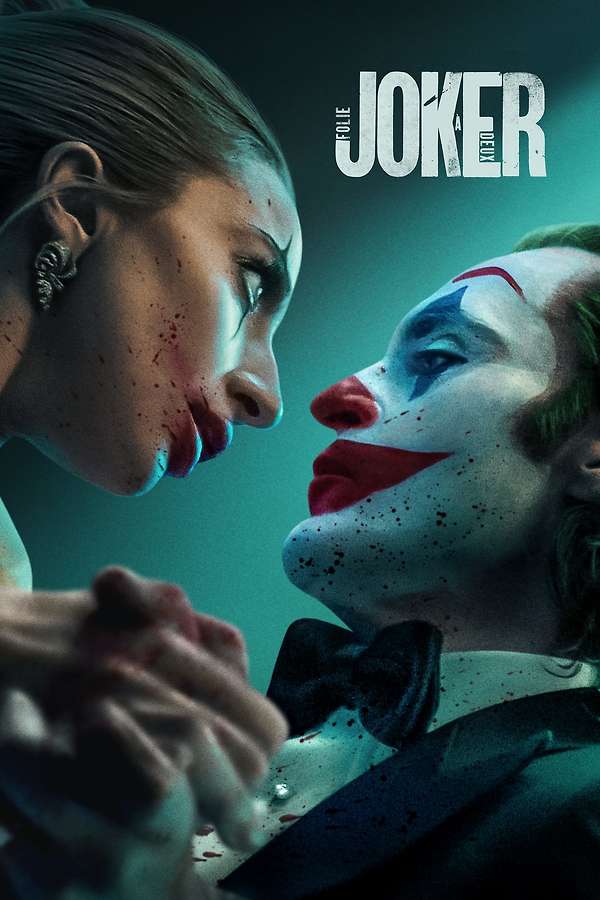
This review may contain spoilers.
Why did musicals emerge? In the midst of tragedy, misfortune and the devastation of what surrounded them, people decided to sing and dance. All as a means of escaping reality, of not facing their miserable truth. That is what Arthur Fleck always did and what he crudely demonstrates in this sequel. The trial was the show he always wanted to star in, the last one.
Were they two different personalities? We will not know who Arthur's last visitor was, perhaps it was "The Clown", to tell him that they were never really separated. They were the same, only that Joker was his safe conduct, what the abusive and hypocritical society created of him. However, nobody really knew him, because his followers wanted the Joker and society wanted Arthur. Who wanted him, both of them? In the middle of all that attempt to escape, Lee enters the scene. The fantasy, the one that thought he would be loved as a whole. However, it is also, like Joker, just an idea that disappears in a final blow when Joker also disappears.
Although the film does not match the first installment in of the complex development of its plot, it does so in other meritorious elements. The cinematography is great. The use of color and musical numbers (comparable to the moments of delirium) are perfectly chosen and balanced, without going overboard or falling short.
But, although the audience found the ending outrageous, for me it was perfect for that very reason. The one who died at the end, stabbed by a prisoner, was Arthur, who was always a failure. There could be no sublimity in his death because he never considered himself important, he was someone else, ignored by everyone and that is how he had to die, like anyone else. Joker, the ired one, the one who made the difference and emerged from the germ of indignation of a society in decline in the first part, died when Arthur killed the illusion. He killed him for not being able to fill his shoes and Harley killed him when she disappeared behind those stairs, thus disappearing the fantasy.
]]>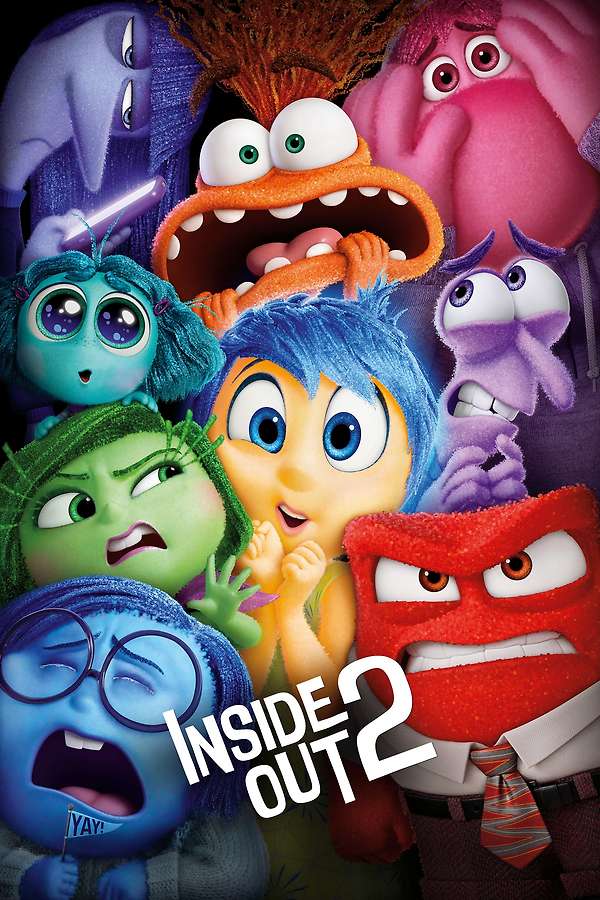
This review may contain spoilers.
Although in of quality, the insertion of various animation styles and character design does not disappoint, because just as in its first installment it does not fail to offer memorable simplified and accurate characterizations of very complex concepts in a fun and understandable way for even the little ones, in of other aspects it falls quite short.
The dramatic progression seemed a bit lacking to me. The arrival of new emotions occurs effectively, but their coexistence with the old emotions does not come together precisely. For this reason the pivot point is inserted very forcefully. Anxiety's takeover does not feel so natural if we compare it to other moments of equal weight in the plot, such as the final attack suffered by Reily and the return of Joy.
Although we could elevate it to subjectivities and suppose a comparison between the way in which puberty arrives in adolescence as an abrupt process, with a lack of meaning, and the control over our emotions as a slower and more leisurely process, we must that it is still being a film for children and although it is intended to play with that approach, a child must be given time to process what is presented on the screen.
]]>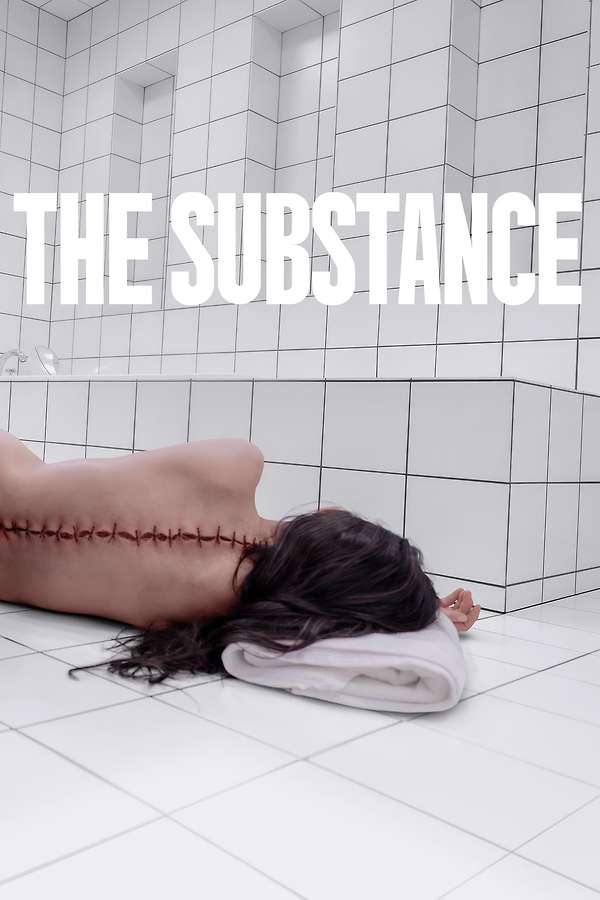
First of all, the basis of this film is the interesting intertextual fabric that is spun in a very precise and strategic way that allows the viewer to trace a clear path.
The first and most important one is the novel perspective on the much-used topic of the Doppelgänger in a perfect combination of body horror, loaded with great nuances of the low body proposed by Francoise Rabelais in literature and with very Frankensteinian overtones, and the stereotyping of the female body. Thus, using this technique, dismantling the established aesthetics of what is commonly considered "beautiful" by contemporary society.
The insistence on: "you are only one" is fundamental. It demands clear attention from the viewer because a t vision of a single being with diverse faces that manifest depending on the circumstances and the demanding society, is intended. Dorian Gray is the maximum expression of similarity on this point.
With a lack of dialogue, it manages to hit the right point, saying only what is absolutely necessary. Giving way to the word to the "voice in command of the substance" or we could say to the "conscience", most of the time, which even speaks at times when it is not actually speaking. It is thus charged with a corrective, censorious character.
As for the artistic design and color, specifically, it is possible to appreciate the exploitation of white with its corresponding semes, "lack", I could say that it is the one that caused me the most relation to perceive. It highlights the figures and to a certain extent causes a loss of materiality in space, making us almost feel in a temporal limbo, thus bringing us closer to the mind of the protagonist. This contrasts with pink, present in society with its deep plasticity, yellow, with its function of load and connection between both "I's"(like the matrix fluid) and red, with its function of tearing, pain and revenge. The last one, with very visible tracings of scenes from Kubrick's The Shining
I consider the dramatic progression to be one of the strongest points of the film, with multiple turning points, one after the other, that manage to surprise the audience. I find influences of Lars Von Trier in certain aspects, taken in a very personal way by the director. The shots and their composition take on a very well-structured symmetry and combine with both perspectives in which the story is divided, dislocating with a third unexpected piece in the puzzle towards the end.
]]>